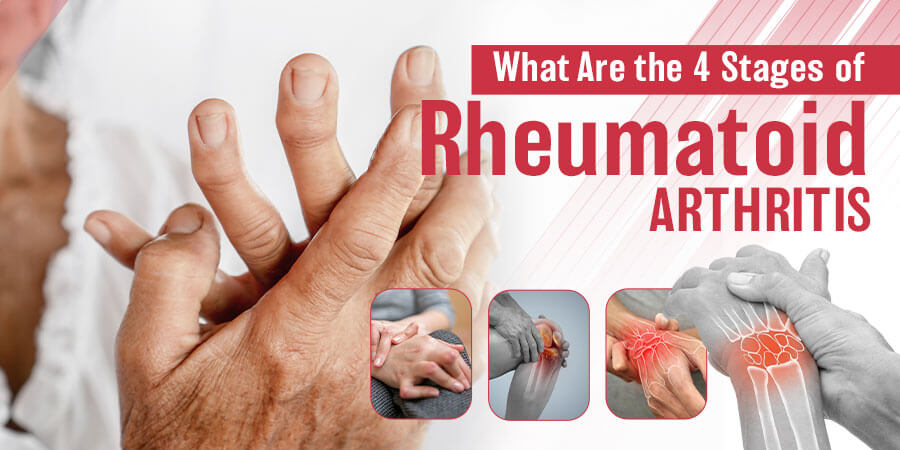To schedule an appointment call: 1 (800) 605-0031
To schedule an appointment call: 1 (800) 605-0031

Rheumatoid arthritis is a long-term joint condition that can affect anyone. When people ask what are the 4 stages of rheumatoid arthritis, they usually want to know how the disease changes over time. Understanding these stages helps patients recognize early signs and seek the right care before major joint damage begins.
Rheumatoid arthritis (RA) is an autoimmune disease. It happens when the immune system attacks the body’s own tissues, especially the joints. This causes pain, swelling, and stiffness. Over time, it can damage the cartilage and bones, making it hard to move or perform daily tasks.
Knowing the stages of RA helps doctors plan better treatment. It also helps patients manage symptoms, slow joint damage, and live more comfortably. When detected early, treatment can protect joints from serious harm.

Each stage shows how the disease progresses and how the joints respond.
At this point, joints feel stiff, especially in the morning. Mild swelling or pain might come and go. You may not notice much damage on X-rays yet, but inflammation is active. Early care at this stage can make a big difference. Regular check-ups are important, just like when you search for oral exams near me to maintain your dental health before bigger issues arise.
Inflammation increases. Cartilage starts breaking down, and movement becomes more painful. People might see redness or feel warmth in their joints. Activities like walking, writing, or dressing can start to hurt. Doctors often use medication and physical therapy to slow the damage.
At this stage, the joint damage is clear. Bone erosion begins. Pain is constant, and movement becomes difficult. Joints can appear deformed or misaligned. Swelling may spread to multiple areas, making even small tasks hard. Treatment focuses on managing pain, protecting joints, and maintaining mobility.
In the final stage, inflammation decreases, but the damage remains. The cartilage is gone, and bones rub against each other. Joints lose full function, causing long-term stiffness and pain. Surgery might be needed to repair or replace the affected joints.
If these signs last for weeks, see a doctor. Early detection can slow or stop the disease from worsening.
The exact cause is unknown. However, genetics, hormones, and environment play roles. Smoking, obesity, and infections can increase risk. In women, hormonal changes may also trigger RA.
A healthy lifestyle supports better outcomes. Even those visiting a high blood pressure doctor near me often learn that simple lifestyle changes help both heart health and joint strength.
Treatment focuses on reducing pain and stopping joint damage. Options include:
Doctors often tailor treatment based on age, overall health, and disease severity.
Food plays a big part in managing inflammation and improving comfort.
These foods help reduce inflammation and improve joint mobility.
Cutting these from your diet can make a visible difference in how your joints feel.
Staying hydrated is just as important. Water and herbal teas help flush toxins and keep joints flexible.
Recognizing what are the 4 stages of rheumatoid arthritis early helps slow the disease before it affects your daily life. Each stage gives clues for better treatment and lifestyle choices. Working with your doctor can make a big difference in keeping joints strong and active.
Rheumatoid arthritis changes slowly but steadily. By learning what are the 4 stages of rheumatoid arthritis, you can take steps to protect your joints, manage pain, and live better. Healthy eating, regular exercise, and early medical care all help. Always monitor new symptoms and seek guidance from trusted professionals. For quality and caring support, visit Samaritana Medical Clinic.
Must Read: What Supplements Are Good for Kidney Health?